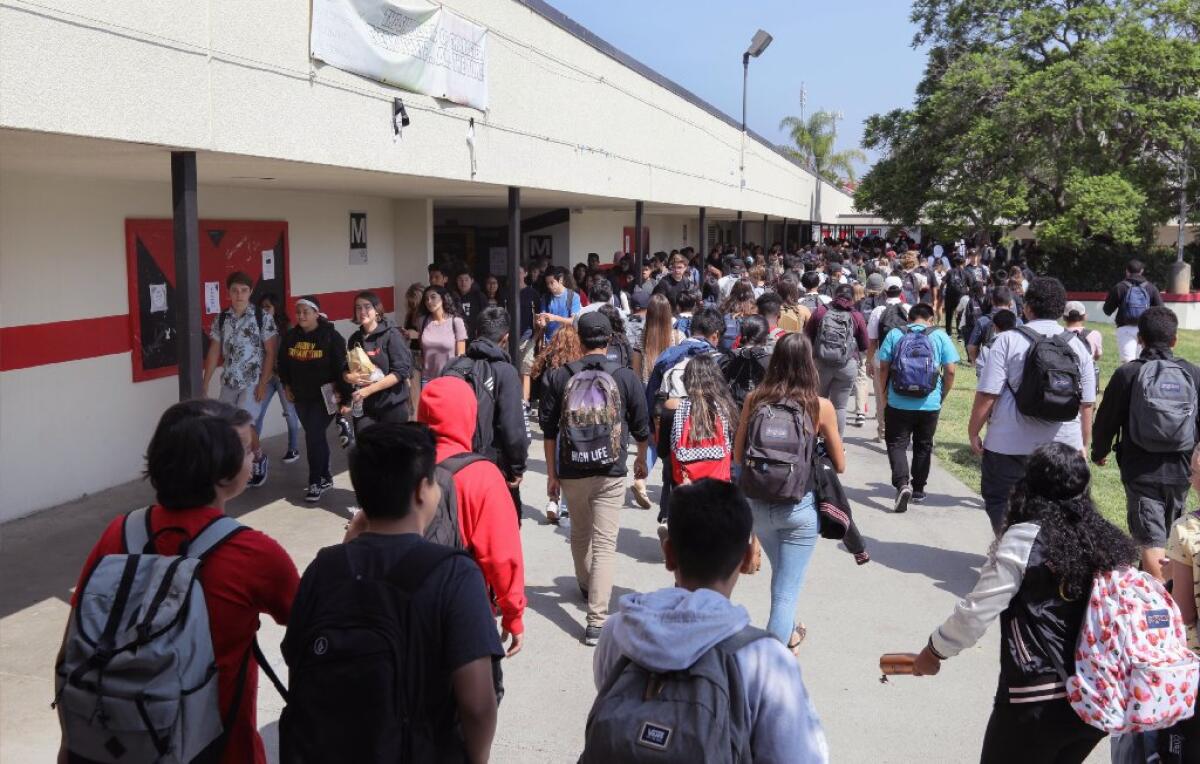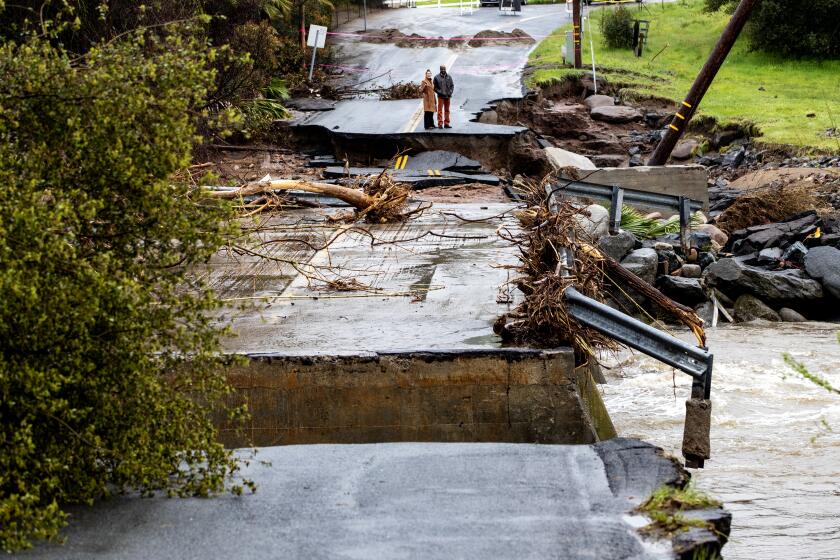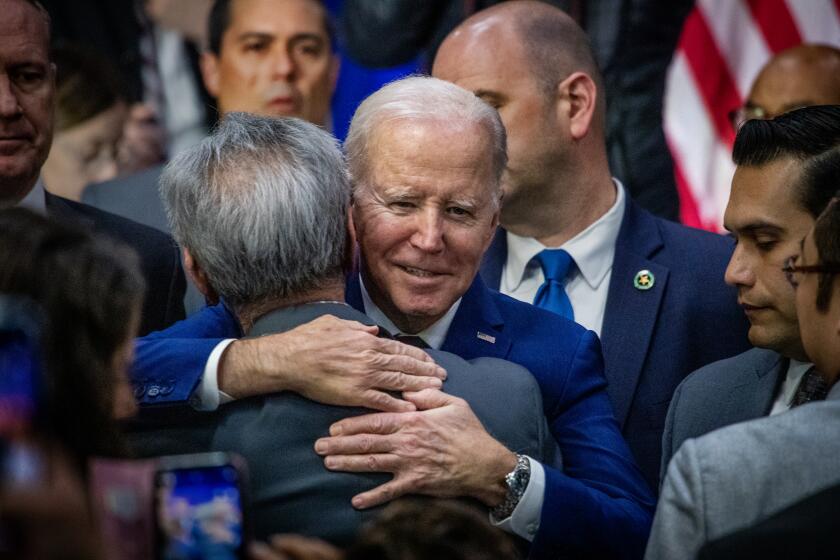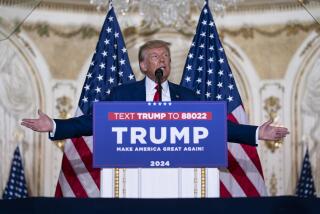Political strife is harming California teens’ high school experience, study says

- Share via
California is often cited as a bastion of left-leaning politics, with an electorate that voted for Joe Biden over Donald Trump by a nearly 2-1 ratio in 2020.
But a study of the state’s high schools shows that California campuses are just as likely to experience political strife as those in other, more polarized states.
“The surprise here is not that California is different, it is that our public schools are experiencing similar levels of political attacks and conflict with what we have seen across the nation,” said John Rogers, a study co-author and director of the UCLA Institute for Democracy, Education and Access.
The study, by researchers at UCLA and UC Riverside, polled 150 principals from California high schools in “blue” congressional districts, where Donald Trump received less than 45% of the vote in the 2020 presidential election, and “purple” districts, where Trump received from 45% to 54.9% of the vote.
Trump received greater than 55% of the vote in only two California congressional districts, which were not included in the study.
The study was conducted as part of a nationwide survey of high school principals.
The results showed that California campuses were not immune to political strife; school leaders in California’s purple communities were far more likely than leaders in blue districts to report that “community conflict” arose over issues affecting LGBTQ students and teachings about race and racism.
More than a dozen locations along major rivers were overflowing as the storm moved south across California. About 336,000 people were without power.
“About two-thirds of schools in the state are experiencing some level of political conflict, mirroring what we have seen in other states,” Rogers said in a news release. “The level of conflict impacting schools would seem to reflect the intensive and pervasive nature of what is happening nationally.”
According to the report, incidents of discrimination against LGBTQ, Black and Latino students have increased.
“More than three-quarters (78%) of California principals reported that their students had made hostile or demeaning remarks to LGBTQ classmates,” the report stated.
Two-thirds of principals reported that racist statements had been directed at Black students, and 50% of principals said that racist remarks had been directed at Latino students.
“That African American students are the recipients of hostile and demeaning remarks more often than any other group of students is particularly striking given that African Americans make up only five percent of all students enrolled in California public schools,” the report said.
Biden, who is visiting Southern California, signs an executive order aimed at increasing the number of background checks to buy guns.
“Moving forward,” Rogers said, “we need to redouble our commitment to ensuring that all California students feel safe and respected in our public schools.”
In purple districts, 64% of principals reported that “the level of intolerance” among students had increased. No principals in purple districts said that that level had decreased.
Additionally, more than 70% of principals reported that students had made “demeaning or hateful” remarks to students on the opposite end of the political spectrum.
Where California schools diverged from nationwide trends was their advocacy for marginalized communities, the report said.
“Nationally, school and district leaders in Purple communities were 22% less likely than those in Blue communities to speak out about the importance of LGBTQ student rights,” the report said.
In California, however, school leaders in purple districts were just as likely to speak out as leaders in blue districts.
More to Read
Sign up for Essential California
The most important California stories and recommendations in your inbox every morning.
You may occasionally receive promotional content from the Los Angeles Times.













